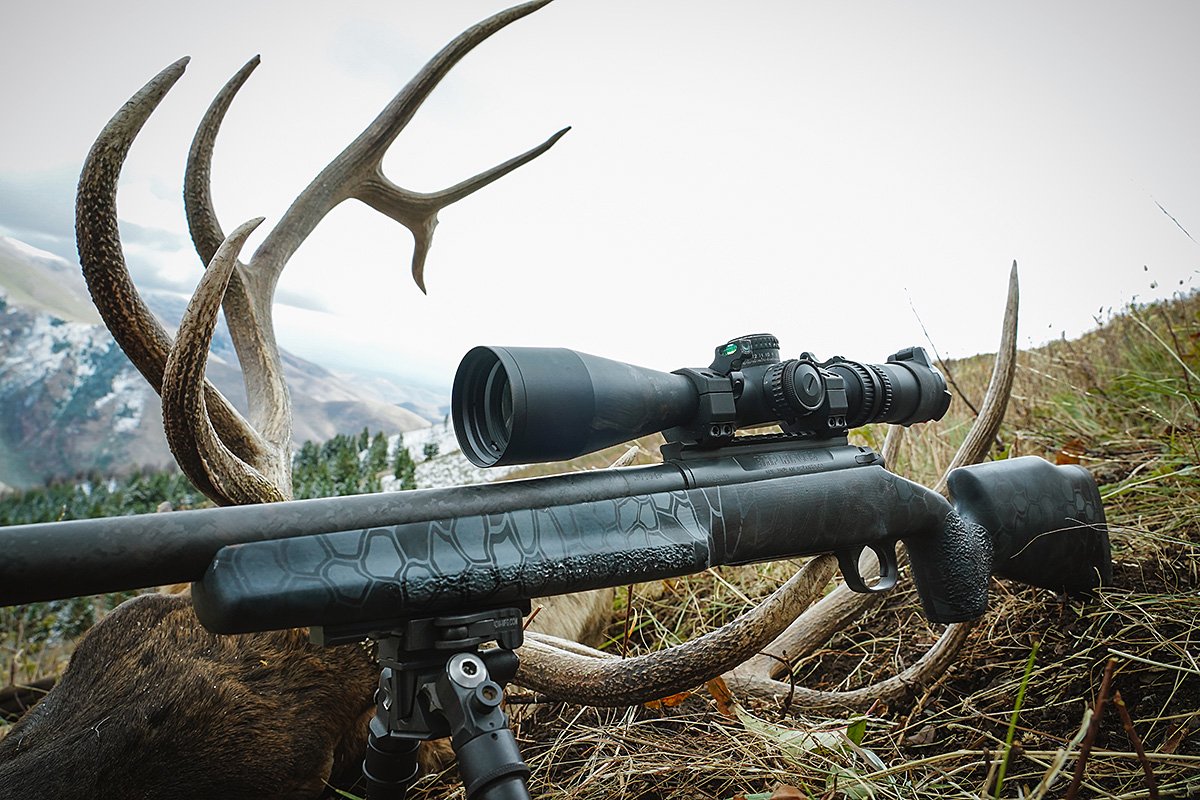
Elk, especially mature bulls, are incredibly large and tough creatures. As a point of comparison, it’s not unusual for a big bull to weigh 3-4x as much as a big-bodied whitetail or mule deer. Stories also abound of poorly hit elk running into the next zip code with no signs of slowing down. For this reason, hunters going afield after elk with a rifle should be adequately armed.
Yes, shot placement is extremely important when hunting any animal, to include elk. The saying “a smaller bullet in the right spot is better than a larger bullet in the wrong spot” does provide sage advice.
However, that only tells part of the story.
We live in an imperfect world and even the best shooters don’t place their shots exactly where they want every single time. It’s a plain and simple fact that a more powerful cartridge does provide a bit more room for error than a smaller, less powerful cartridge. That could be the difference between a filled tag or a crippled and lost animal in the case of a borderline hit on an elk.
The elk don’t always cooperate either. You might only get one opportunity at the bull of a lifetime and he might not present a perfect broadside shot at 200 yards. However, an appropriate cartridge will give you some more options on the shots you can ethically take under realistic hunting conditions.
With all that in mind, my goal with this article is to provide you with a couple of good recommendations on selecting the right caliber for hunting elk.
Keep in mind that this is not an all-inclusive list either. Countless hunters go afield each year with other cartridges and have great success on elk. If you fall into that group, don’t take the lack of inclusion of your favorite elk caliber on this list as an insult. However, if you’re looking for a good elk rifle, these 5 cartridges are a good place to start.
While choosing the right cartridge is extremely important, don’t forget about your bullets either. After all, it’s the bullet that kills the elk. Regardless of the cartridge you use, pick a well-constructed, controlled expansion bullet like the Barnes TTSX/LRX, Nosler AccuBond/Partition, or Swift A-Frame/Scirocco (just to name a few). Those bullets will provide the terminal performance necessary to punch through the heavy bones and thick muscles of a big bull elk to reach the vitals from a variety of shooting angles.
Let's get started...
7mm Remington Magnum
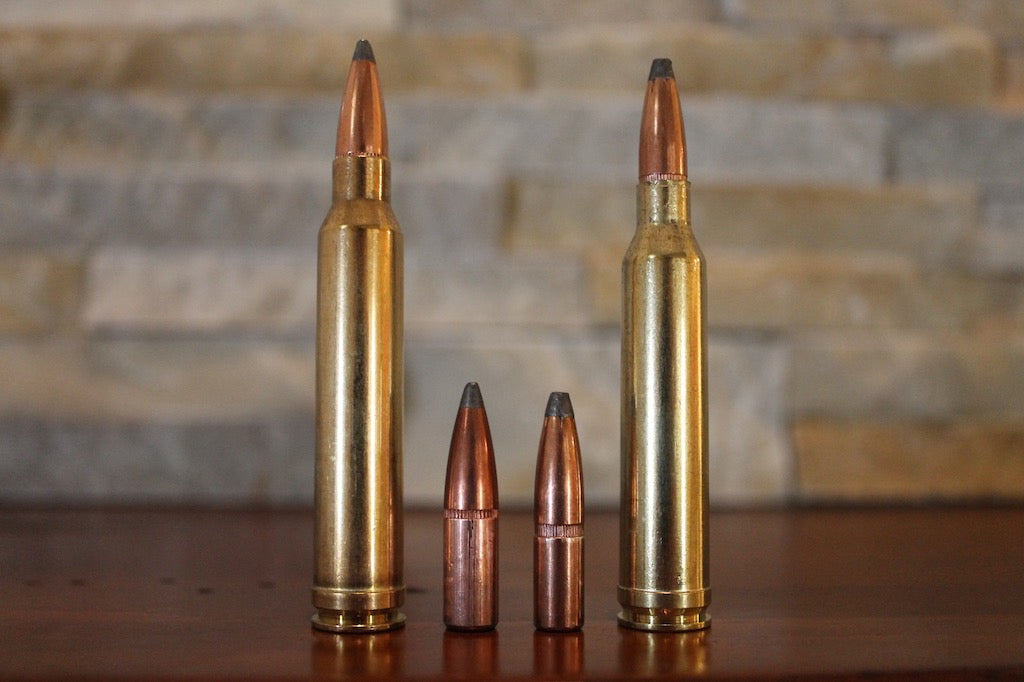
300 Winchester Magnum (L) vs 7mm Remington Magnum (R)
The 7mm Remington Magnum was a big commercial success for Remington when it started hitting shelves in the early 1960s. Hunters fell in love with the high velocity, flat-shooting cartridge from the very start.
However, the cartridge got a reputation among elk hunters as a “wounder” after a couple of years.
This was primarily because 7mm Mag factory ammo initially used bullets poorly suited to the high velocities produced by the cartridge. Those lightweight, thin jacketed bullets performed very well at the more sedate velocities produced by the 7mm Mauser, but would expand far too rapidly, sometimes explosively, upon impact when fired at 7mm Rem Mag velocities (about 400-500fps faster).
In those cases, bullet penetration was terrible, sometimes not even reaching the vitals when striking a bone or a heavily muscled shoulder. The result was some horrific flesh wounds that were often not immediately fatal to the elk. Fortunately, that problem has since been fixed and hunters now have access to an excellent selection of high-quality 7mm bullets that perform very well on really big game like elk.
Hunters using lightweight 140gr bullets designed for deer hunting may still experience issues with poor penetration today, but the 7mm Remington Magnum is absolutely deadly on elk when using premium quality 160-175gr bullets.
All in all, the cartridge offers great external ballistics and very good terminal performance with moderate recoil. Get a good quality rifle chambered in 7mm Remington Magnum, or a cartridge offering similar performance like the .280 Ackley Improved, and you’ll be well-armed for elk season.
30-06 Springfield

.270 Winchester (L) vs .30-06 Springfield (R)
It’s over a century old, so the .30-06 is far from the latest and greatest thing. However, hunters have been killing elk (and all sorts of other game) with the old aught-six since it was first released in the early days of the 20th Century.
The cartridge doesn’t have the eye-popping ballistics of the modern super magnums, but the .30-06 is still an extremely capable elk caliber at reasonable hunting ranges. It has significantly less recoil than most magnum cartridges as well.
Indeed, just about any elk outfitter would prefer to have a hunter arrive in camp with a well-worn .30-06 that he or she can shoot well than a brand new magnum. Loaded with high quality 180 grain bullets, the .30-06 Springfield is a dependable elk slayer.
.300 Winchester Magnum
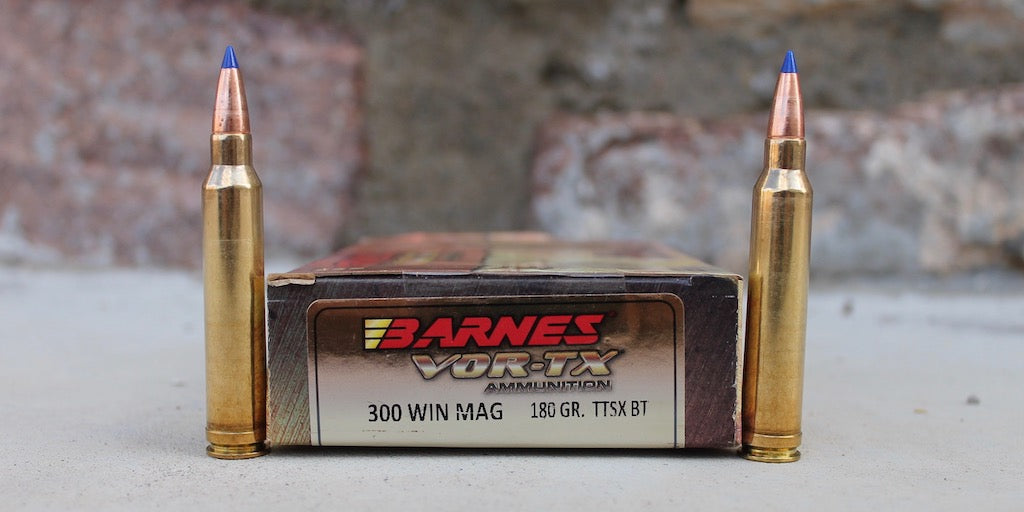
While the .30-06 is a great all-around hunting caliber, the .300 Winchester Magnum does provide a bit more horsepower for hunters who want to wring a little more performance out of a .30 caliber cartridge. Provided the hunter can deal with the extra recoil that comes along with the .300 Win Mag, that extra power can come in handy on elk.
Using the same .308” diameter projectiles as the .30-06, the .300 Win Mag can either shoot the same weight bullet about 200fps faster, or shoot a heavier bullet at a similar speed. This results in a flatter trajectory, more resistance to wind drift, and more retained energy at a longer range.
There’s also an outstanding selection of really good quality 180 grain, 190 grain, and 200-grain bullets for the .300 Win Mag that offer reliable penetration and controlled expansion on elk at virtually any reasonable hunting range. Add it all up and you have an extremely versatile and effective cartridge
Not surprisingly, the .300 Win Mag is extremely popular and highly regarded among serious elk hunters.
.338 Winchester Magnum
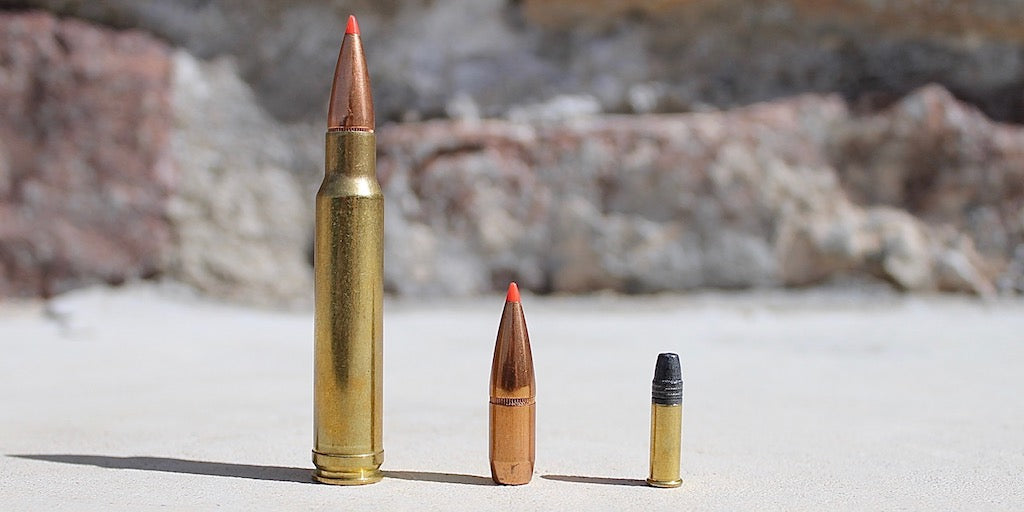
Since it first hit shelves in the late 1950s, the .338 Winchester Magnum has long been a favorite of North American hunters who need a serious rifle cartridge for serious hunts. The cartridge hits really hard at typical hunting ranges while at the same time offering a great mix of a reasonably flat trajectory and manageable recoil (for many hunters anyway).
The cartridge shoots .338” diameter bullets that have approximately 20% more frontal surface area than the .30 caliber bullets used by the .30-06 and .300 Win Mag. The 225gr and 250gr bullets commonly used by elk hunters in the cartridge also have a high sectional density, which helps with penetration.
So, those larger diameter bullets hit like a sledgehammer and penetrate well, both of which are ideal characteristics when dealing with less than ideal shot angles on elk. As long as you can shoot it accurately, the .338 Win Mag can absolutely hammer elk.
Those same characteristics make the .338 Winchester Magnum a nice cartridge to use while elk hunting in grizzly country. In the unlikely event that you need to defend yourself from a bear on your elk hunt, then you can take some comfort in knowing that the .338 Win Mag is also extremely effective on even the biggest bears.
Unfortunately, recoil can be an issue for some hunters with the .338 Win Mag. Many hunters can deal with that recoil without any trouble, but not everybody can. Some hunters are tempted to put a muzzle brake on their rifle to help tame that extra “kick.” However, while muzzle brakes are effective at doing just that, they also enhance the muzzle blast.
That muzzle blast can cause permanent hearing damage to anybody in the immediate vicinity not wearing ear protection. The muzzle blast is especially severe for people standing next to you while you shoot (like your guide), so really think hard before putting a muzzle brake on a big magnum rifle. If you’re struggling with recoil, consider stepping down to a less powerful load instead of using a brake.
All that said, if you can handle the .338 Win Mag and place your shots where they need to go, then you can go afield with what may be the best all-around elk caliber in common use today.
6.5 PRC
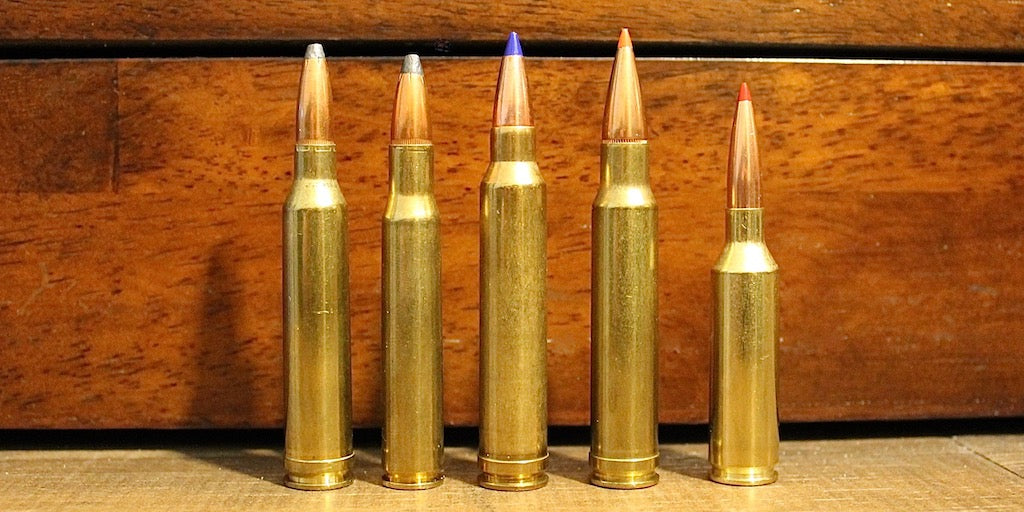
Left-to-Right: 7mm Rem Mag, 30-06, 300 Win Mag, 338 Win Mag, 6.5 PRC
The incredible popularity of the 6.5 Creedmoor has helped usher in an unprecedented amount of interest in 6.5mm cartridges among North American hunters in recent years. Well, the 6.5 Precision Rifle Cartridge (6.5 PRC) is essentially the bigger brother to the 6.5 Creedmoor and shoots the same weight bullet about 200-250fps faster.
In general, while they don’t hit with nearly as much power as the bigger bore cartridges we just discussed, 6.5mm cartridges like the 6.5 Creedmoor, .260 Remington, 6.5 Swede, and 6.5 PRC tend to use very high sectional density bullets that penetrate well and help them “punch above their weight.”
Those smaller cartridges are also generally very accurate and have a very mild recoil, both of which help facilitate good shot placement. When using bullets like a 127 grain Barnes LRX, a 140 grain Swift A-Frame, or a 143 grain Hornady ELD-X, the 6.5 PRC can be darn effective on even the biggest bull elk.
If you have a hankering to use a 6.5mm cartridge on elk, then the 6.5 PRC is probably the best one for the job. However, for all the strengths of the 6.5 PRC, it is not in the same class as cartridges like the 7mm Rem Mag or .300 Win Mag.
Yes, the 6.5 PRC will get the job done with good shot placement, but your margin of error will be a little smaller and you should probably be more careful about which shots you do (and don’t) take when using it.
As long as you accept the limitations of the cartridge and don’t try to push the envelope with it, then the 6.5 PRC will serve you well afield.
Header Photo by @toppriorityhunting
Like what you see? You can read more great articles by John McAdams on the Big Game Hunting Blog or subscribe to his podcast, the Big Game Hunting Podcast.
